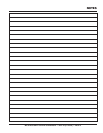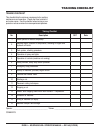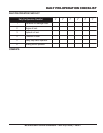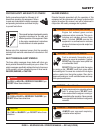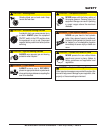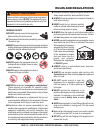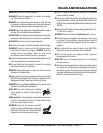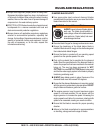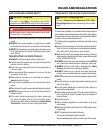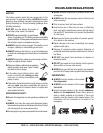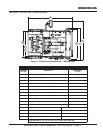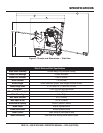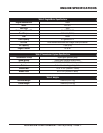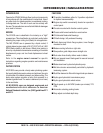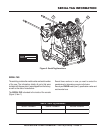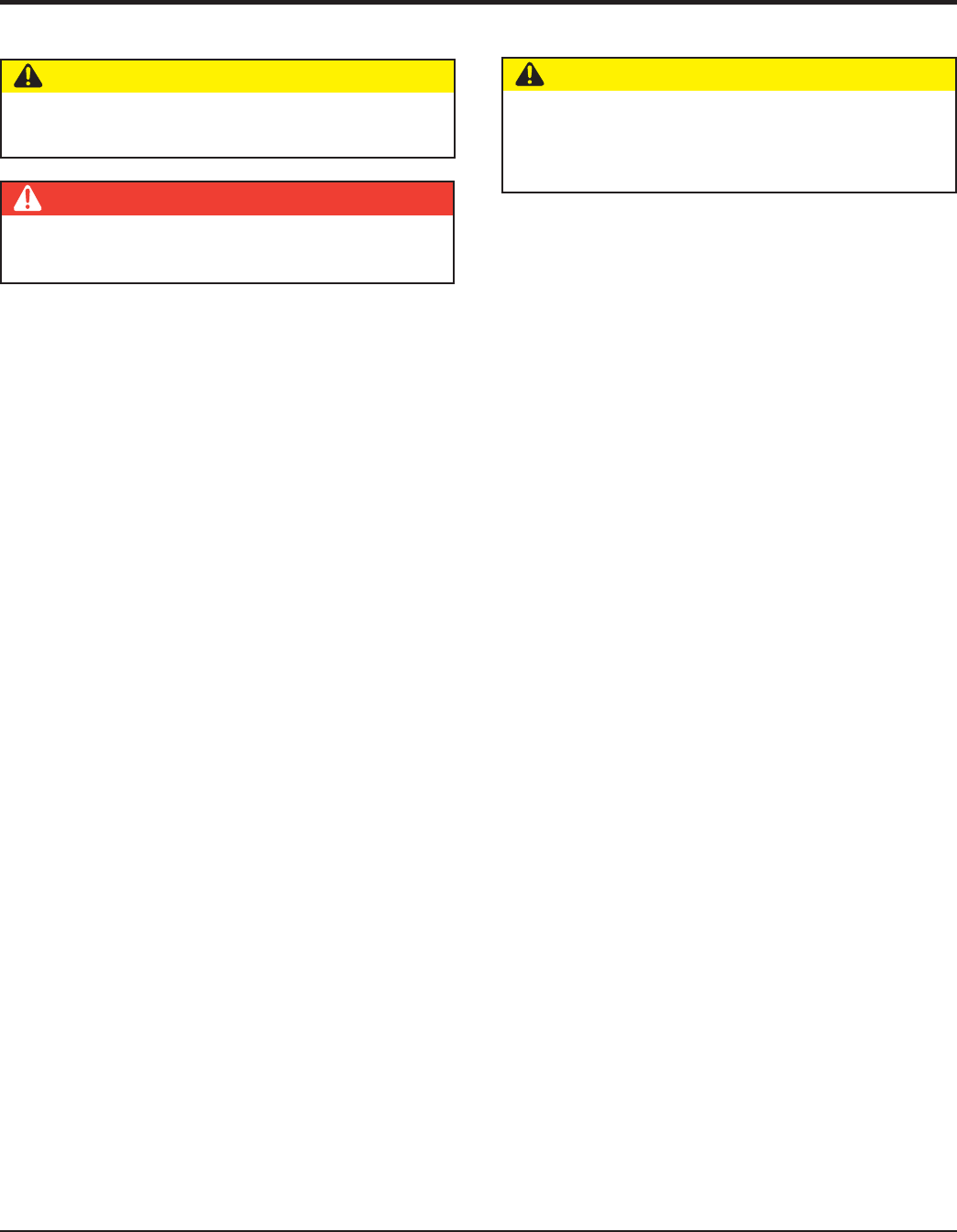
MQ SP4030 SAW • OPERATION MANUAL — REV. #0 (01/22/09) — PAGE 13
RULES AND REGULATIONS
SAW LIFTING AND LOADING SAFETY
DO NOT use the handle bars and/or front pointer as lifting
points.
ALWAYS use ramps capable of supporting the weight
of the saw and the operator to load and unload the saw.
NEVER tip the engine to extreme angles as it may cause
oil to gravitate into the cylinder head making the engine
start difficult.
TRANSPORTING (VIA TRUCK/TRAILER)
ALWAYS shutdown engine before transporting.
Tighten fuel tank cap securely and close fuel petcock to
prevent fuel from spilling.
Drain fuel when transporting saw for long distances or
over bad roads.
Use appropriate lifting equipment to ensure the safe
movement of the saw.
When placing the saw on a truck-bed for transport,
always
tie-down the saw.
Do not use the handlebars or front pointer as tie-down
points.
Never attempt to tow the saw untrailered behind a vehicle.
NEVER transport the saw to or from the job site with the
blade mounted.
If the saw is being transported via a trailer, make sure
the trailer complies with all local and state safety
transportation laws. Refer to the following “
Towing Safety
Precautions
” section
for basic towing techniques.
CAUTION — Lifting Saw
This saw is very heavy. Use proper heavy lifting
procedures and DO NOT attempt to lift by the guards.
DANGER — Do Not Stand Upder Saw
NEVER stand under or allow anyone else to stand under
the saw while it is being lifted.
TOWING SAFETY PRECAUTIONS (TRAILER USAGE)
To reduce the possibility of an accident while transporting the
saw on public roads, always make sure the trailer that supports
the saw and the towing vehicle are in good operating condition
and both units are mechanically sound.
The following list of suggestions should be used when towing
your saw:
Check the tire air pressure on both towing vehicle and trailer.
Refer to the tire manufacturer’s recommended pressure.
Also check the tire tread wear on both vehicles.
Make sure the hitch and coupling of the towing vehicle are
rated equal to, or greater than the trailer “gross vehicle weight
rating” (GVWR) of 6,000 lbs.
ALWAYS inspect the hitch and coupling for wear. NEVER
tow a trailer with defective hitches, couplings, chains, etc.
ALWAYS make sure the trailer is equipped with Safety
Chains and ensure they are attached properly.
ALWAYS make sure the vehicle and trailer directional,
backup, brake, and trailer lights are connected and working.
DO NOT exceed the recommended highway speed when
towing.
Use chock-blocks at each wheel when parked to prevent
trailer from rolling.
Use the trailer’s swivel jack to adjust the trailer height to a
level position while parked.
Avoid sudden stops and starts. This can cause the trailer to
skid or jack-knife. Smooth, gradual starts and stops will
improve towing.
Avoid sharp turns.
Trailer should be adjusted to a level position at all times
when towing.
Raise and lock trailer wheel stand in the “UP” position when
transporting.
DOT requirements include the following:
Connect and test electric brake operation.
Secure portable power cables in cable tray with tie wraps.
CAUTION — Transporting Saw
Conform to
Department of Transportation (DOT) Safety
Towing Regulations
before transporting saw on public
roads.



